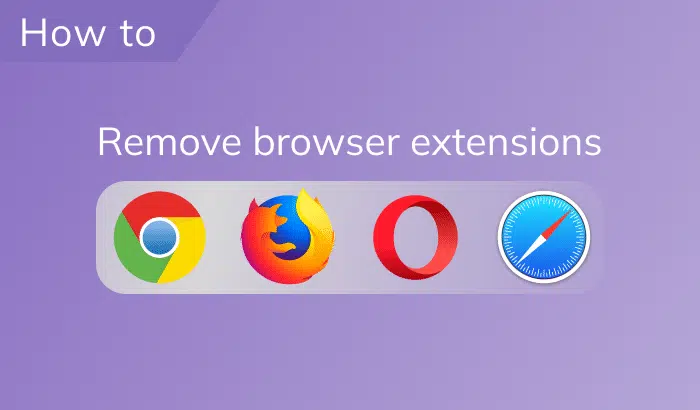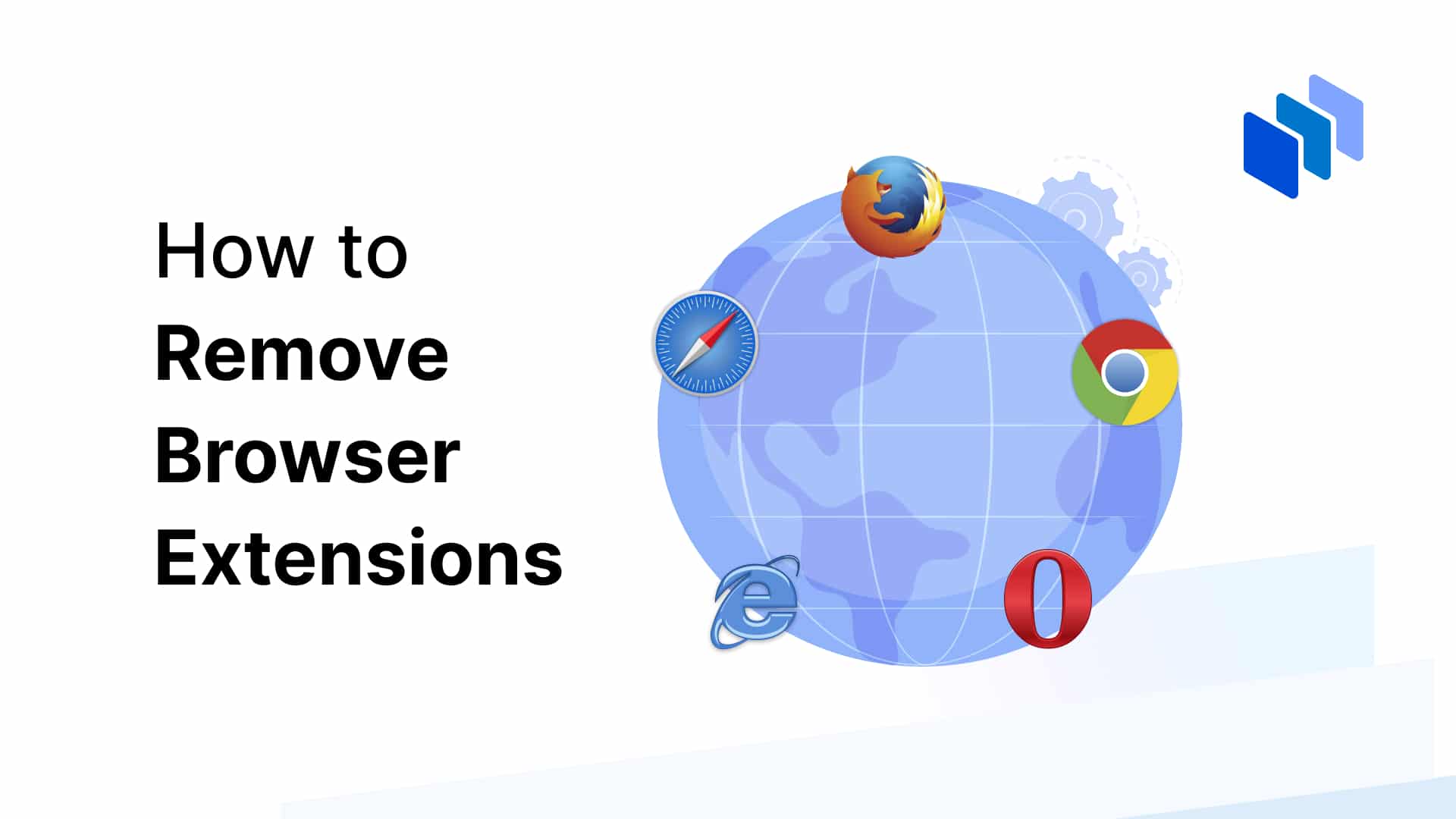
|
IN BRIEF
|
When it comes to enhancing your online experience, browser extensions play a crucial role. However, issues can arise that prevent them from functioning properly. Understanding the steps to fix problems with these extensions is essential for maintaining an efficient and hassle-free browsing experience. From troubleshooting the settings to checking for conflicts, knowing how to resolve these issues will empower you to make the most of your browser’s capabilities. In this guide, we will explore key solutions to common extension problems.
Understanding the Steps to Fix Browser Extensions Problems
Browser extensions can significantly enhance your web experience, but they sometimes cause unexpected issues. Knowing the proper steps to troubleshoot these problems can save you time and hassle. This article outlines the critical steps needed to address common complications with browser extensions, discussing both their advantages and disadvantages.
Step 1: Check Extension Functionality
The first step involves verifying if the extensions are enabled and functioning correctly. Open your browser’s settings and navigate to the extensions page. From here, you can see if the extensions are active; if not, toggle them on. Sometimes, restarting the browser is all it takes to restore functionality.
Step 2: Review Permissions
In some cases, extensions may require specific permissions that might not be granted. Check to see that the necessary permissions have been approved by navigating to the extension settings. Failure to do this might result in limited functionality.
Step 3: Disable Conflicting Extensions
When encountering issues, you might need to disable all extensions temporarily. This step helps identify if one is causing malfunctions. By enabling them one by one, you can pinpoint the troublemaker. If you want detailed guidance, refer to the troubleshooting guide.
Step 4: Reinstall Extensions
If problems persist, reinstalling the affected extension can often resolve issues. To do this, remove the extension and then reinstall it from the Chrome Web Store. Ensure you are installing from trusted sources to minimize potential security risks.
Advantages
Following these steps has several advantages:
- Quick Resolution: These methods often lead to a quick fix, enhancing your overall browsing experience.
- User-Friendly: Most users can follow these steps without requiring extensive technical knowledge.
- Proactive Approach: Regularly checking extension functionality can prevent major issues down the line.
Disadvantages
However, there are also some inconveniences associated with these troubleshooting steps:
- Time-Consuming: Going through these steps can take time, particularly if multiple extensions are involved.
- Trial and Error: It may take several attempts to identify and fix the actual problem, which can be frustrating.
- Not Always Effective: Sometimes, the steps may not resolve the issue, leading to the need for additional troubleshooting or contacting support.
For further assistance or more complex issues, consider checking out resources like Mozilla’s Troubleshooting page or explore common browser fixes for errors at Fix Your Browser.
Browser extensions can enhance our web experience but sometimes they may stop functioning properly. Understanding how to diagnose and fix these issues can save time and frustration. This guide provides clear steps to identify and solve common problems with extensions across various browsers.
Identify the Problem
The first step in fixing browser extension issues is to identify the problem. Check if all extensions are experiencing malfunctions or if it’s isolated to one. Restarting the browser can sometimes resolve minor glitches. If the problem persists, it may be time to dig deeper into troubleshooting.
Disable All Extensions
To determine if an extension is the source of the issue, disable all extensions. This allows you to see if the browser operates smoothly without them. If it does, you can enable extensions one by one to identify the troublemaker. You can find methods on how to do this in comprehensive guides on troubleshooting Google Chrome extensions.
Check Extension Permissions
Sometimes, extensions require specific permissions to function correctly. Verify that the permissions requested by each extension are granted. Check the permissions and make sure they align with the intended functions. Missing permissions can often lead to the failure of an extension.
Update Your Browser and Extensions
Having the latest version of your browser and extensions is crucial. Updates often fix bugs and improve performance. Ensure your browser is up to date, and check the Chrome Web Store or respective browser’s extension store for any available updates. A detailed process is available in guides such as how to update Chrome extensions.
Clear Cache and Cookies
Over time, stored cache and cookies can lead to issues with extensions. Clearing them can fix various problems, including slow performance and loading issues. Navigate to your browser settings to find the option to clear these files. Effective methods for clearing cache can be found in resources dealing with browser fixes.
Reinstall the Extensions
If the previous steps didn’t resolve the issues, consider uninstalling and then reinstalling the affected extensions. This process can resolve any corruption or glitches that may have occurred. Keep in mind that when you remove the extension, your settings will revert to their original state.
Investigate Conflicting Software
Sometimes, other software on your computer may interfere with browser extensions. Antivirus programs or firewalls might block components of the extensions, leading to malfunction. Temporarily disabling such software may help identify if they are the cause of the problems.
Restore Default Settings
If all else fails, restoring your browser to its default settings can resolve persistent extension problems. This will reset all configurations, including extensions and themes. However, do keep in mind that this action will remove all changes made and restore the default state.
Explore Additional Resources
If you continue to face issues even after following these steps, don’t hesitate to consult further resources or forums. Engaging with other users experiencing similar problems can provide new insights. For example, discuss your issues on platforms such as TechRepublic or learn how to address issues like ERR_CACHE_MISS via this guide here.
Stay Safe and Smart with Extensions
When installing or using browser extensions, always opt for those from trusted sources. Caution is crucial to prevent malware or performance-draining extensions. If in doubt, refer to resources on how to remove potential threats, like removing unwanted browser hijackers.
By following these steps, you can tackle a variety of issues that influence browser extensions, preserving a smooth online experience.

Browser extensions can significantly enhance your online experience, but occasionally, they may encounter issues that disrupt their functionality. Understanding the steps to troubleshoot these problems is essential for maintaining an efficient browsing environment. Below are proven methods to resolve common issues you may encounter with your browser extensions.
Check Installed Extensions
The first step in fixing extension problems is to verify that the extensions are properly installed and enabled. Navigate to the Chrome Web Store and check your My Extensions & Apps section among the settings. Ensure that the required extensions are listed and active. If buttons remain greyed out, it might indicate a deeper issue that needs resolving.
Disable All Extensions Temporarily
If you’re experiencing malfunctions, a useful technique is to disable all extensions at once. This will help determine if the issue lies with a specific extension. By identifying the culprit, you can selectively re-enable extensions until you find the one causing the conflict. This troubleshooting tactic is efficient and can save you time.
Restart Your Browser
Sometimes, a simple restart of the browser can solve various issues related to extensions. This action refreshes the browser’s session, and all processes are reinitialized, potentially fixing minor glitches. If the problem persists, it’s advisable to continue troubleshooting with other methods.
Check for Updates
Outdated extensions may not function correctly. Regularly updating your extensions can address compatibility issues with the browser. For instructions on how to update your extensions, visit the Chrome Web Store Help. Keeping your extensions updated ensures you’re benefiting from the latest features and bug fixes.
Manage Permissions Wisely
It’s vital to ensure that each extension has the necessary permissions to function as intended. Sometimes, extensions can act erratically if not granted the right access to the browser or the sites you’re visiting. Review the permissions of each extension by going to the extensions page and modifying them as necessary.
Remove and Reinstall Problematic Extensions
If specific extensions continue to cause problems, consider removing and then reinstalling them. This method often clears out any corrupted files and resets the extension to its default state, potentially resolving ongoing issues. For guidance on how to remove extensions, refer to the Chrome Web Store Help.
Seek External Support
If none of these methods work, seeking external support can be beneficial. Utilize online resources and forums to gather insights from other users who may have faced similar issues. For further troubleshooting techniques, check this comprehensive guide for additional solutions.
Steps to Fix Browser Extensions Problems
| Steps | Concise Explanation |
| Check Extension Status | Verify that the extension is installed and enabled in your browser. |
| Restart the Browser | A simple restart might resolve minor issues with extensions. |
| Disable All Extensions | Temporarily disable all extensions to identify potential conflicts. |
| Review Permissions | Ensure all required permissions are granted to the extension. |
| Clear Browser Cache | Clear the cache to eliminate any temporary files causing issues. |
| Update the Browser | Keep your browser up to date to avoid compatibility issues with extensions. |
| Reinstall the Extension | Uninstall and then reinstall the extension to reset any problems. |
| Consult Support Resources | Visit help articles or community forums for guidance on specific issues. |

Steps to Fix Browser Extensions Problems
Many users have encountered issues with their browser extensions, leading to a frustrating experience. One effective approach to fix these problems is to restart the browser. This often resolves temporary glitches and allows the extensions to function properly once again. It’s amazing how a simple restart can clear out bugs and bring everything back to normal.
If the problem persists, a thorough troubleshooting process can be initiated. Start by disabling all extensions to identify if one is causing the issue. This method of elimination helps pinpoint the troublesome extension, allowing users to focus their efforts on fixing or removing it.
In cases where extensions fail to install or load correctly, ensuring that all permissions are granted is crucial. Users should check if their browser’s settings are prohibiting the installation of new extensions or causing existing ones not to load. Verifying these settings can often lead to a straightforward resolution.
For those using devices like Chromebooks or mobile devices, it’s vital to investigate if parental controls or other restrictions are in place. Adjusting these controls often restores functionality to the extensions. Awareness of these settings can save users a lot of time and prevent confusion.
If extensions appear to be greyed out or inactive, it might be useful to check for any recent updates to the browser itself. Sometimes, updating Google Chrome can eliminate compatibility issues and allow extensions to work seamlessly again.
Finally, if users find their extensions are still not operating correctly despite taking the aforementioned steps, they may need to consider reinstalling them. Uninstalling an extension and then reinstalling it can refresh the data associated with it, often leading to improved performance.
Browser extensions can enhance your online experience by adding valuable functionality. However, issues can arise that prevent them from working correctly. This guide outlines the essential steps to troubleshoot and fix problems associated with browser extensions, ensuring a smooth online journey.
Check Extension Status
The first step in troubleshooting browser extensions is to verify their status. Open your browser and navigate to the extensions page. Ensure that all desired extensions are enabled. If any appear disabled, toggle their status to enable them. If the buttons remain greyed out, this indicates a deeper issue that needs addressing.
Disable All Extensions
Sometimes, conflicting extensions can cause problems. A useful troubleshooting method is to disable all extensions temporarily. This allows you to check if a particular extension is causing issues. If the problem is resolved after disabling them, re-enable each one individually to identify the culprit causing the disruption.
Clear Browser Cache
If disabling extensions doesn’t remedy the situation, the next step is to clear your browser cache. Over time, a buildup of cache and cookies can interfere with extension functionality. Go to your browser settings and locate the option to clear browsing data, making sure to include cached images and files.
Check Permissions
Some extensions require specific permissions to function correctly. Review the permissions requested by the extensions in question. If permissions have been altered or are insufficient, consider adjusting them to allow the extension to operate as intended.
Update Extensions and Browser
Running outdated software can lead to compatibility issues. Ensure that both your browser and extensions are updated to the latest versions. Navigate to the extensions page and check for any available updates. You can also check the browser settings for updates to the software itself.
Restart the Browser
A simple yet effective method to resolve many issues is to restart your browser. Close all browser windows and reopen them. This action can refresh the session and may rectify any temporary glitches affecting extension performance.
Reinstall Problematic Extensions
If you have identified a specific extension that is underperforming, consider reinstalling it. Remove the extension from your browser and then access the Chrome Web Store or your browser’s equivalent to reinstall it. This process can rectify any installation issues that may be hindering its functionality.
Scan for Malware
Malware can sometimes disguise itself as a browser extension or interfere with normal extensions. Perform a malware scan using reputable antivirus software. This step helps to ensure that your system is free from malicious programs that could be impacting your browser and its extensions.
Seek Help from Support Forums
If the above steps do not resolve your issues, consider seeking help from support forums. Many browsers and extension developers maintain community forums where users can share solutions and troubleshooting tips. Engaging with others who may have encountered similar issues can prove beneficial.

Browser extensions offer users enhanced functionality and improved productivity. However, there are times when these extensions may misbehave or stop functioning altogether. To tackle such problems effectively, it is essential to follow a series of systematic steps.
First and foremost, check your browser settings. Make sure that the extensions are properly installed and enabled. Navigate to the browser’s extensions page and confirm that the relevant buttons are active. In some cases, additional permissions may be necessary for the extensions to operate correctly. Ensure that these are granted to avoid conflicts.
If the extensions remain unresponsive, restart the browser. This simple yet often overlooked step can resolve temporary glitches that may prevent the extensions from loading correctly. If the issue persists, consider disabling all extensions temporarily to identify whether a particular one is causing the conflict. By enabling them one by one, you can determine which extension is at fault.
In cases where installation issues occur, such as being unable to add extensions from the usual Chrome Web Store, it might be necessary to access the older installation site. Occasionally, newer versions have restrictions that can affect installation. Be cautious while choosing extensions, ensuring they originate from trusted sources only.
Lastly, keeping your browser and extensions updated is crucial for maintaining optimal performance and security. Regular updates not only improve functionality but also fix any underlying issues. Don’t hesitate to remove any extensions that seem to disrupt your browsing experience, as they can often revert browser settings back to their original state.
Frequently Asked Questions about Browser Extension Issues
What are the first steps to troubleshoot browser extensions?
Begin by disabling all extensions to determine if the problem is resolved. If the issue persists, it might be related to the browser itself or other settings.
How can I fix it if extensions are not working at all?
If the buttons for enabling extensions remain greyed out, you may need to restart the browser. If that fails, try disabling all extensions and check again.
What if my extensions are not loading properly?
Make sure to check that the extensions are installed and enabled. Additionally, verify the permissions requested by each extension.
What should I do if I can’t install extensions from the Chrome Web Store?
This issue may occur if you’re trying to install via the new Chrome extensions site. Use the old site for installation purposes.
How can I manage browser extensions effectively?
You can manage your extensions by regularly updating them and ensuring that only trusted sources are used for installation.
How do I remove a browser extension virus?
To eliminate a browser extension virus, uninstall the problematic extension from the Chrome Web Store and reset the browser settings to their defaults.
What can cause browser crashes related to extensions?
Browser crashes can be triggered by incompatible extensions or themes, hardware acceleration issues, or an overload of running extensions.
What is the best way to improve extension performance?
To enhance extension performance, consider removing unnecessary extensions and ensuring your browser is updated to the latest version.